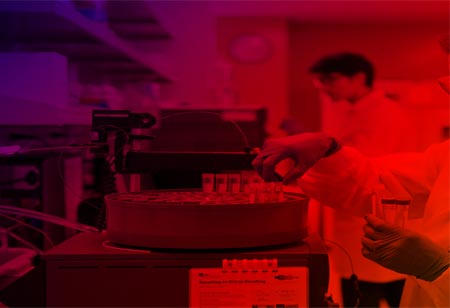Chemical engineers add their special expertise to make many promising fresh concepts an actuality.
FREMONT, CA: Biomedical researchers can devise new therapeutic approaches to manage and treat disease by deciphering the complex phenomena occurring within the human body.
Along with these researchers, chemical engineers add their special expertise to make many promising fresh concepts an actuality. The consequent techniques and devices are now effectively employed to help lengthen and enhance our lives.
Treating diabetes
The prevalence of diabetes is at the top. To handle this chronic disease, numerous patients must check glucose levels in their blood and routinely inject themselves with insulin. The joint efforts of chemical engineers, physicians, and biomedical researchers have generated enhanced techniques for monitoring blood glucose levels and administering insulin.
Monitoring and maintaining
Automatic monitoring systems for diabetes care employ sensors interposed under the skin and affiliated directly to transportable insulin arouses, presenting greater treatment accuracy and convenience.
Diabetes is on the increase. As a chronic disorder, it places a huge medical and economic load on our society.
Patients with diabetes must continuously monitor and manage their glucose levels. This task can be hard and possess life-threatening implications.
With the joint efforts of the chemical-engineering and biomedical communities, enhanced techniques for gauging blood glucose levels and managing insulin are being advanced.
Glucose level monitoring
Recent innovations incorporate:
• Microanalytical techniques that need smaller blood samples,
• Unceasing glucose monitors that are inserted beneath the skin, and
• Application of implanted microchips to manage insulin addition.
Insulin injection
New advances include:
• Automatic, continuous-infusion insulin injection pumps a little larger than a cell phone, and
• Compact pens that join the insulin container with the syringe.
Tissue Engineering
Tissue engineering includes the use of living cells as building materials. Engineered tissues are created to mend or substitute damaged or ailing organs and tissues. Thus, some of the functions conducted by the human body can be expanded or imitated by this innovative, multidisciplinary technology.
Building with cells
Surgeons can make body wall repairs through this biocompatible material created with the support of chemical engineers.
Promising research-and-development actions in tissue engineering entail the creation of biological substitutes employed to restore, maintain, and enhance tissue function. They may even substitute entire human organs. Engineered biological substitutes are created to mend or substitute damaged or diseased organs and tissues. Instance incorporate:
• Transplantation cells that perform certain biochemical functions, for instance, improving pancreas, liver, or bladder functions;
• Replacement tissues, like artificial skin, tendons,
• bones, cartilage, blood vessels, ligaments; and
• Stem cells can revitalize functional human tissues.
A growing field
The growth of appropriate human replacement tissues is still in its infancy. One early success is substituting skin, grown over-engineered polymer scaffolds used to treat burn victims. Researchers follow viable techniques to improve and uphold mammalian stem cell and neuron functions. Biodegradable polymeric fibers are also being aimed to act as nerve-guide aqueducts in the regeneration of nerves. All these original endeavors require chemical engineers' expertise and technical contributions working in cooperation with biomedical researchers.
Drug Delivery
Traditionally, the customary method of providing medications to patients has been by mouth or injection. Early improvements have comprised nasal sprays, dermal patches, and controlled-release products. With chemical engineers' support, aimed drug-delivery vehicles spread medications to the desired location within the body and liberate it on demand.
Governed and on target
Micro medical robots, shaped like little beetles, are designed to travel inside the body to treat infected areas, thus minimizing the need for surgery.
Drugs have customarily been provided to patients by mouth or by injection. Working together to advance the efficacy and safety of drug delivery, chemical and biomedical engineers have devised different advanced delivery techniques. These new techniques also present the added advantages of improved comfort and comfort for the patient.
Early drug-delivery breakthroughs employing chemical principles contain:
• Nasal sprays that provide finely atomized amounts of a drug through inhalation,
• Transdermal patches that offer controlled doses with the skin, and
• Controlled-release capsules and wafers that present drugs over a long period.
Objective delivery
Drug-delivery methods have been essential for chemical and biomedical engineers in recent years. Modern vehicles are designed to provide a drug specifically to the aimed organ, tissue, or tumor. The drug payload is then liberated in return for an internal or external trigger and the amount necessary at the site.
Such delivery systems have the benefit of being able to:
• Lower or hinder premature degradation of a drug once it is in the body,
• Magnify the capacity of a drug to travel via the body to the target site without impacting healthy tissue and organs,
• Lower the total amount of the drug that must be allocated, and
• Lower feasible side effects usually result when healthy tissue and organs are open to a drug.

